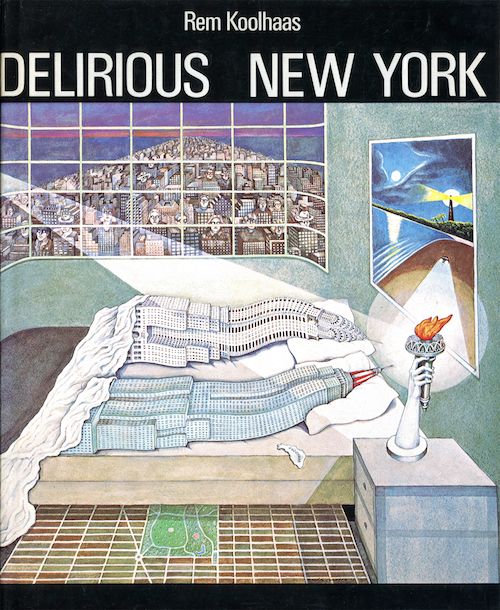
When Rem Koolhaas published Delirious New York in 1978, he hadn’t yet built his best-known work. Central China Television Headquarters was 35 years away, the Seattle Central Library was 26 years away, and even the Maison à Bordeaux (subject of the documentary Koolhaas Houselife) was 20 years away. In fact he hadn’t yet built anything at all, having established his Office of Metropolitan Architecture just three years earlier. If Koolhaas is to be taken at his word — and the character of his pronouncements suggests he often isn’t — the book laid the foundation of his architectural career. And though he may have written it grandiosely, he didn’t write it frivolously: its origins go at least as far back as his student days at Cornell University, where he received a grant to study in the early 1970s, and which put him in relative proximity to New York.
After growing up in the Netherlands, with three formative years in Jakarta, Koolhaas commenced his architectural education in London. This placed him well to lead, for good or ill, the life of the 21st-century “global citizen.” His physically weighty 1995 book S,M,L,XL presents a chart of all the flights he takes during his hundreds of days abroad in a year. Only such a thorough familiarity with airports could have inspired 2006’s Junkspace, which defines and even pays tribute to the kind of cheap, utilitarian, placeless, and often purgatorial spaces — albeit spaces at the summit of staggering technological development — occupied by the international traveler. This suggests a streak of Ballardian brazenness that takes hypermodern mundanity (or hypermundane modernity) as found, even amid the commercial nondescriptness of Rotterdam, the city of Koolhaas’ birth and the one in which he’s headquartered OMA.
Whatever his current sensibilities, Koolhaas is hardly the only architect to have been captivated in his younger days by New York. But as far as I know, none of the others have written for the city a “retroactive manifesto,” as Delirious New York‘s subtitle declares it. More specifically, Koolhaas wrote it for Manhattan, from the history of whose built environment he attempts to derive the principles of an emergent, implicit ideology called “Manhattanism.” Under Manhattanism, “doctrine of indefinitely postponed consciousness,” each new building strives to be “a City Within a City,” a condition that, taken to its logical conclusion, “makes the Metropolis a collection of architectural city-states, all potentially at war with each other.” The “language of fantasy-pragmatism” lends an appearance of objectivity to Manhattanism’s ambition, that of creating “congestion on all possible levels.” Manhattanism “is the only program where the efficiency” demanded in 20th-century America “intersects with the sublime.”
Read the whole thing at Substack.